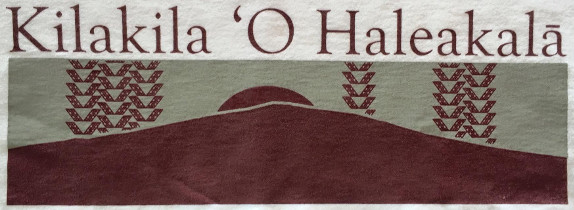By KIOPE RAYMOND
The summit area of Haleakala does not have a comprehensive, community-driven, scientifically based and culturally appropriate management plan.
A partial list of Haleakala summit users would include 1.7 million annual visitors to Haleakala National Park; National Park Service employees; staff of Coast Guard communication towers, TV and phone towers; the UH Institute for Astronomy, its lessees and partners; commercial activity businesses and Native Hawaiian practitioners.
As a result, individual entities, like the Institute for Astronomy, have their own long-range plans for development. Without a comprehensive plan for the summit area, inappropriate projects like the construction of the 143-foot, 14-story Advanced Technology Solar Telescope on the summit of Haleakala can be developed on separate parcels that have adverse impact on the whole.
If one wanted to build a 14-story hotel on Maui, it would not be allowed! If one wanted to build a 14-story public education complex on Maui, it would not be allowed! If one wanted to build a 14-story structure to house the houseless on Maui, it would not be allowed!
Yet, we would allow the construction of a 14-story observatory that will top out at approximately 10,123 feet – 100 feet higher than the highest point on the island – within a summit area that has no comprehensive master plan; that is acknowledged to be a sacred place; that is on what the state says are 18 acres of ceded lands which accrue just $1 per annum, therefore just 20 cents pro rata share for the benefit of Native Hawaiians in rent from the Institute for Astronomy to the state of Hawaii; that is going to need an additional Maui Electric substation and power for the equivalent of 4,000 homes; and is, lest we forget, on state conservation district land.
A fallacious argument is made that because Hawaiians revered astronomy, then anything done in the 21st century with respect to astronomy is automatically consistent with Hawaiian spirituality. It’s like saying because Hawaiians revere kalo and because a company wants to genetically modify kalo they’re actually not at cross purposes – they both have proper respect for kalo, they’re just looking at it differently. That logic is unacceptable!
It is also unacceptable logic that infers that during the 19th century period of Hawaiian monarchy, Kalakaua introduced telescopes to Hawaii and he would be – and we should be – in favor of the ATST. Well, Kalakaua also introduced electricity to Hawaii. Shouldn’t we, by the same logic, light up Maui – or at least the top of Haleakala – at night with electric lights? Of course not!
The proximity – less than 100 feet – of the 14-story structure during six or more years’ construction phase and then at least 50 more years of planned existence to a place of worship is painful to those who want to offer respectful prayer. It is a place of spiritual epiphany. It is even more painful to those who want to practice Hawaiian religious ceremonies with offerings to Hawaiian deities to see the desecration of digging into the rock, a kino lau or physical manifestation of the goddess Pele, and the possible loss, or “incidental take,” of ‘ua’u. The petrel is considered an ‘aumakua, or family ancestral spirit.
When I recall the mo’olelo of Maui snaring the sun, I remember that Maui’s act had direct benefit for his own family and to all Hawaiians. I respectfully doubt and question the direct benefit to all Hawaiians and residents of Maui that is derived from the construction of the proposed ATST.
The supplemental draft environmental impact statement public comment period ends June 22. The final EIS is currently scheduled to be finished in late summer or fall. During a 30-day period thereafter, in addition to an internal final review, the public and other agencies can comment on the final EIS prior to final action on the proposal. The DLNR Conservation District Use application 180-day permit process and public hearings are currently scheduled for this winter and next spring. More information on this issue can be obtained at www.karenchun.com/storedsites/kilakilahaleakala.org/ and atst.nso.edu.
* Kiope Raymond, a Native Hawaiian, is a tenured associate professor of Hawaiian language and culture at Maui Community College and president of the nonprofit Kilakila o Haleakala, which works to protect the sanctity of the mountain. He lives in Waiohuli.


